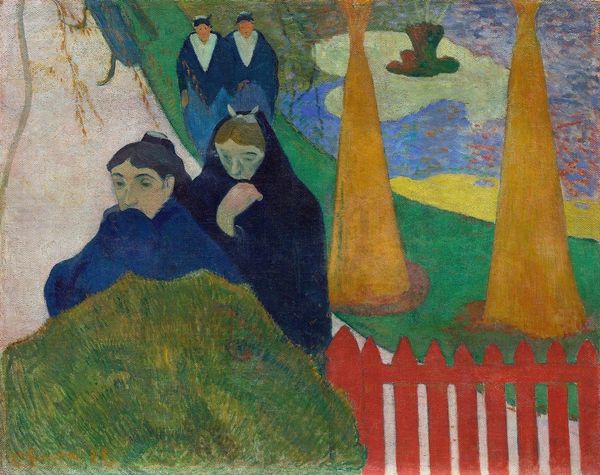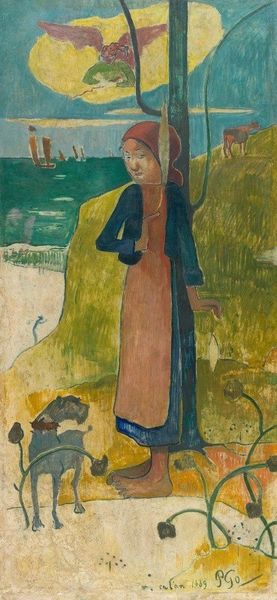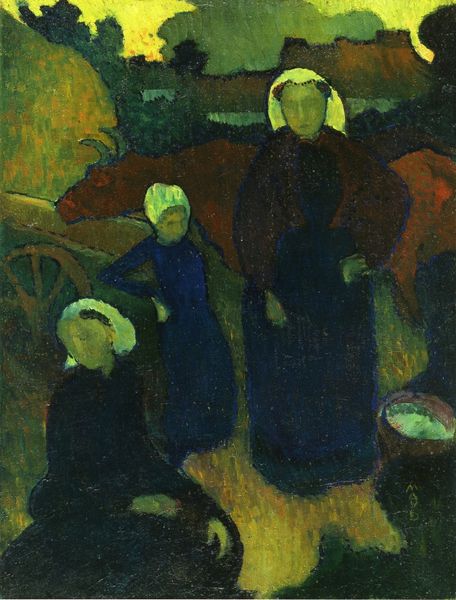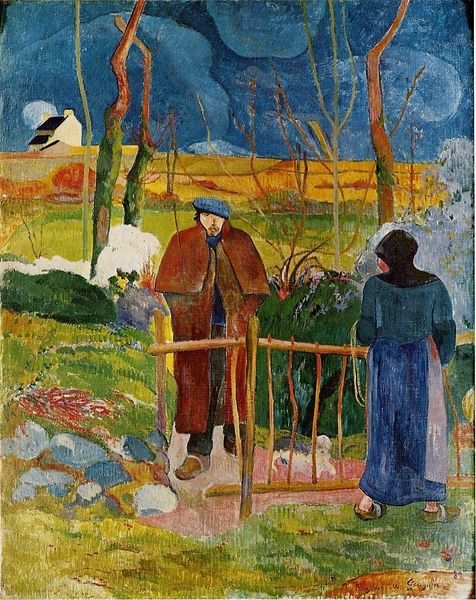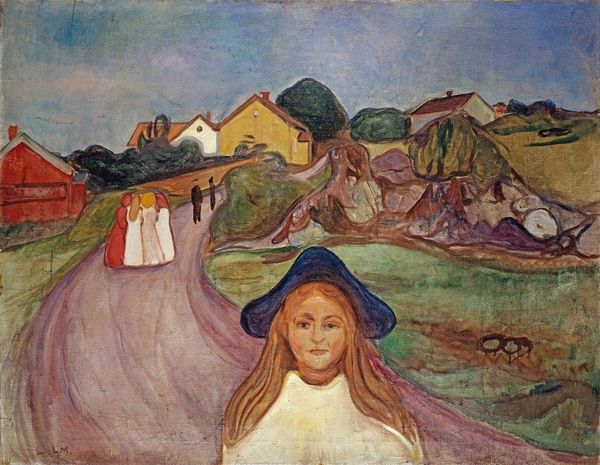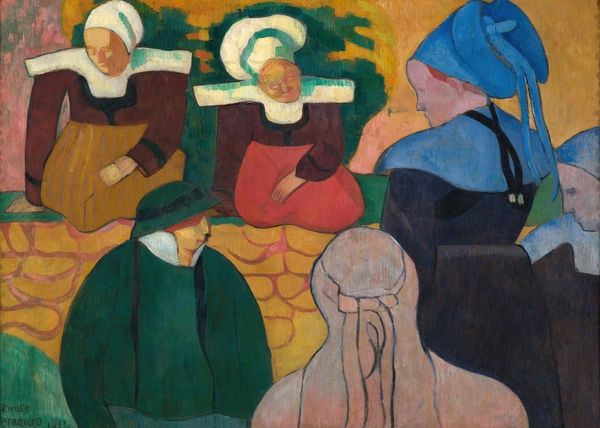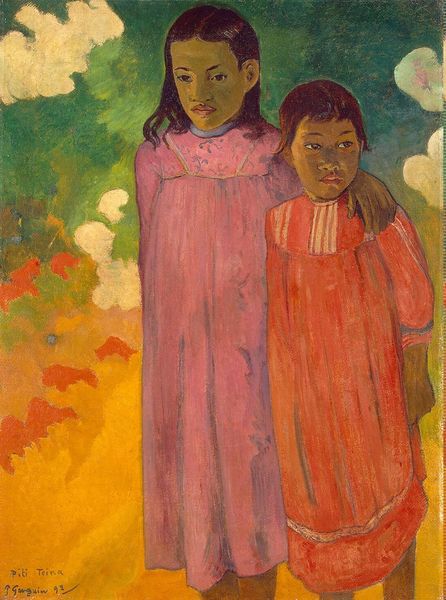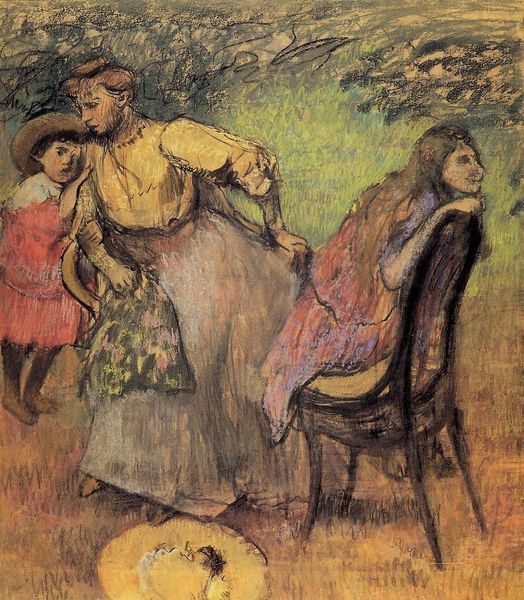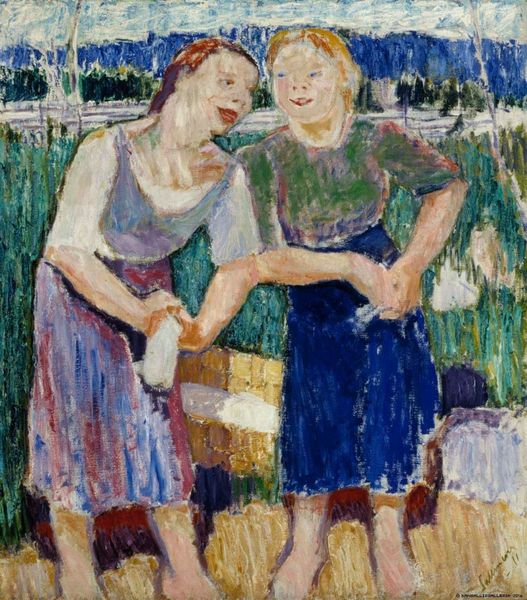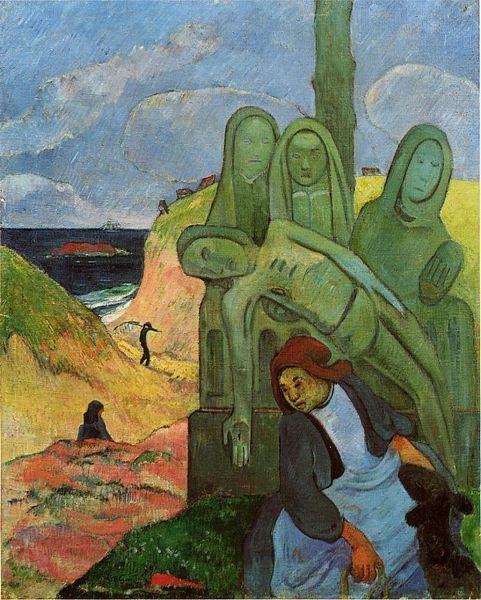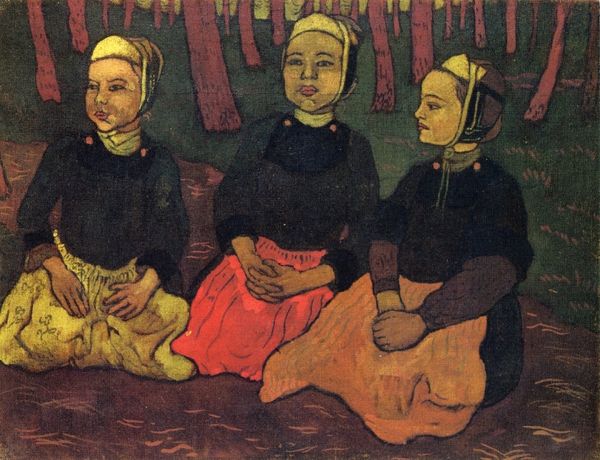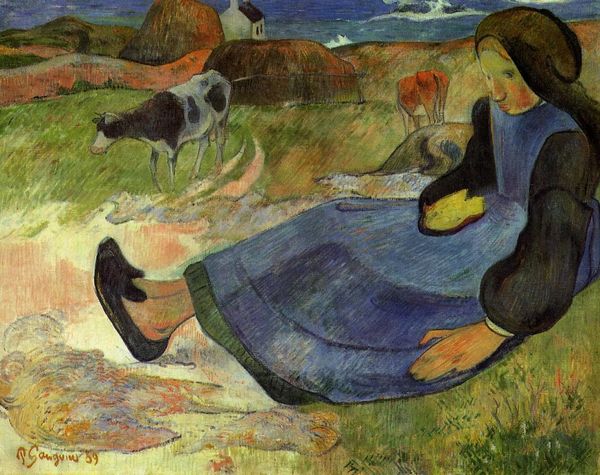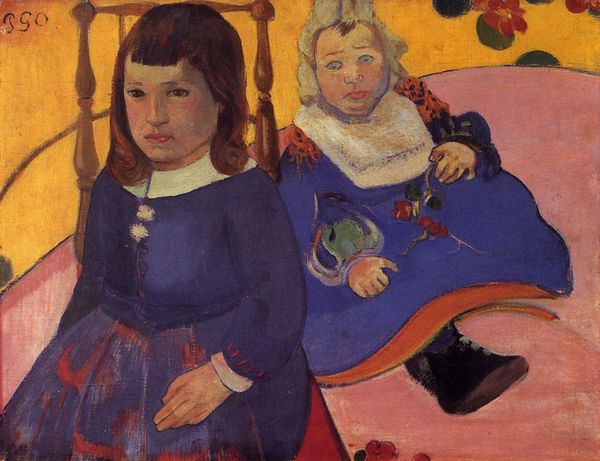
painting, oil-paint, impasto
#
figurative
#
painting
#
oil-paint
#
landscape
#
oil painting
#
impasto
#
naive art
#
genre-painting
#
post-impressionism
Copyright: Public Domain: Artvee
Editor: This is "Two Breton Girls by the Sea," painted by Paul Gauguin. The oil paint application looks so thick, it's like I could almost peel it off the canvas. The composition and the girls' faces give me a melancholic feeling, but I can’t tell you exactly why. What do you see in this piece? Curator: The density of pigment is striking. Observe how the planes of color, rather than blending seamlessly, abut one another. Do you see how the painting isn't about replicating visual reality? Editor: Definitely. It’s less about realism, more about… well, what *is* it about? Curator: Consider the simplification of form. Note how the contours of the figures are boldly outlined, almost as if they've been extracted from a flattened plane. Look also at how the colors are arbitrary, the ground being red for instance. How does that choice strike you? Editor: I suppose that the redness makes it unreal and heightens the feeling, it really adds something uncanny to it, it's quite dreamlike. Curator: Exactly. Gauguin abandoned the illusionistic techniques he had learned and moved towards what he referred to as "synthetism." Editor: Synthetism? What does that mean here? Curator: Gauguin sought to synthesize observation with the artist's feelings. What we’re looking at is a visual shorthand for something felt, rather than seen. We aren’t seeing Brittany as it objectively *is,* but how Gauguin experiences it. Editor: So the emotional effect comes not from what’s depicted, but from how. That’s really interesting to think about! Curator: Precisely. We are examining Gauguin’s formal techniques to understand his emotional effect on us, to see if we respond in tandem with his personal expression. Editor: Thanks. That gives me so much to think about as I keep exploring this.
Comments
No comments
Be the first to comment and join the conversation on the ultimate creative platform.
